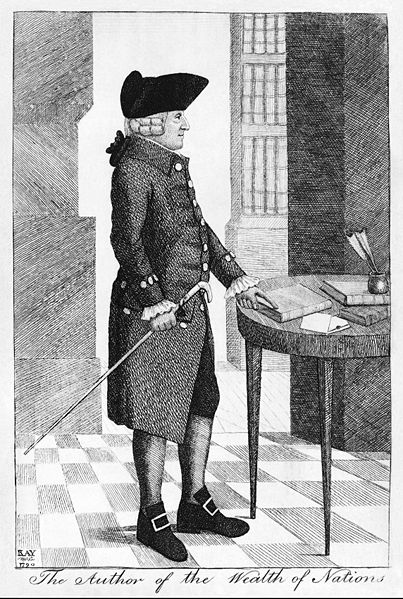Well, one of those theories was termed, initially a bit humorously, the "profit squeeze" theory of crises. At any rate, the label stuck and many still use it, without any intended irony, although their first proponents preferred the "class struggle theory of crises" denomination.
In particular, Prof. Steve Keen (University of Western Sydney) has written about it recently, in connection with his own research. (See here)
But, what is the profit squeeze/class struggle theory of crises?
Keen puts it thus:
"(...) to produce output you need factories, and factories can't produce without hiring workers. The level of employment influences worker's ability to get wage rises, and profit is basically what's left after wages have been paid. Capitalists then invest using profits, and that investment determines whether the number of factories increases (because of gross investment) or falls (because of depreciation).To my knowledge, one of the first expositions of the profit squeeze/class struggle theory of crises (a relatively widely cited and mathematically formalized one, mentioned by Keen) was provided by the late Richard M. Goodwin in 1967 (see here, here and especially here, in Spanish, for related econometric research).
During the stagflation crises of the mid-1970s, profit squeeze ideas gained some prominence among Marxist authors. Prof. John Bellamy Foster (University of Oregon) has recently written on it, contrasting the profit squeeze with Kalecki's views on employment, profits, prices and inflation.
Although Foster refers specifically to research by Raford Boddy and James Crotty published in 1974, other Marxist authors published on the subject around that time.
Sam Williams (from "A Critique of Crisis Theory" blog) analyses the work of Peter Bell and Harry Cleaver (1982), exclusively from a Marxist theoretical view. (See here)
Interestingly around the time, non-Marxist authors otherwise highly dismissive of Marxist economics, also found some interest in profit squeeze ideas, without acknowledging their origin.
Paul Samuelson, quoted by Mark Thoma:
"Actually, Keynes was an elitist exponent of the middle classes. Like Bertrand Russell, he recognized even before Stalin's hegemony the totalitarian inefficiencies of a system run in the name of the working class.
"An optimist who lived at a time when the world economy was running so badly that clever gimmicks could still work wonders, Keynes's object was to save capitalism from itself. In the end, his prescription in its most simple form self-destructed, as the obligation to run a full-employment humanitarian state caused modern economies to succumb to the new disease of stagflation - high inflation along with joblessness and excess capacity". (See here)
References:
Bell, P. & Cleaver, H. (1982). "Marx's Theory of Crisis as a Theory of Class Struggle". Research in Political Economy, 5.
Reprinted as
Bell, P., & Cleaver, H. (2002). "Marx's Theory of Crisis as a Theory of Class Struggle". The Commoner, 5, 1-61. (http://www.commoner.org.uk/?p=9)
Boddy, R., Crotty, J. (1974). "Class Conflict, Keynesian Policies, and the Business Cycle". Monthly Review, 26(5), 1-17.
Foster, J.B. (2013). "Marx, Kalecki, and Socialist Strategy". Monthly Review, 64(11).
(http://monthlyreview.org/2013/04/01/marx-kalecki-and-socialist-strategy)
Goodwin, R.M. (1967). "A Growth Cycle", in C.H. Feinstein (ed.), "Socialism, Capitalism and Economic Growth". Cambridge: Cambridge University Press.




